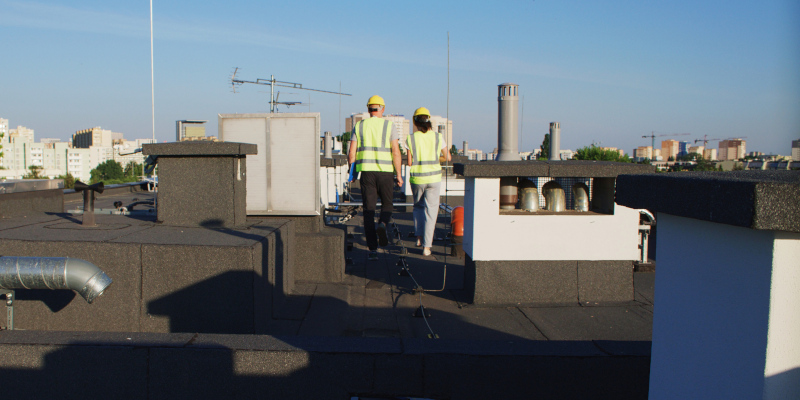Our team at Hammer Time Roofing has extensive experience in the roofing industry, and you can count on us to keep the roof of your home or business in great shape. One way we do this is by offering thorough inspections for both residential and commercial roofs. In this article, we will focus on our flat roof inspection process, going over a few of the key things we look at in order to assess the condition of your roof.

- Pooling Water – One of the first things we look for during a flat roof inspection is pooling water, or low spots in the roof where water might collect. When your flat roof is in good condition, water will flow off it right away, which prevents leaks and water damage. If we notice any signs of water pooling on your roof, we’ll let you know right away and help guide you through the next steps to correct the issue before it can cause a real leak.
- Damaged Seals – Another thing we examine in a flat roof inspection is the condition of the seals. All roofs have seals at points where components meet to prevent water from leaking through the gaps. Over time, however, these seals can break down, leaving your roof vulnerable to water damage. If we find any damaged seals, we will alert you and take the next steps to reseal these areas.
- Mold Growth – A third thing our team will check for during a flat roof inspection is the presence of mold, mildew, algae, or other organic growth. All these organisms thrive in damp environments, so their presence is a sign that your roof is no longer as waterproof as it is supposed to be.
